Overview
The article highlights the significant advantages of low retention pipette tips, emphasizing their critical role in enhancing laboratory efficiency. By improving liquid recovery and minimizing sample loss, these tips demonstrate their effectiveness in maintaining sample integrity.
Furthermore, their user-friendly design ensures compatibility with various pipette brands, making them an essential tool in research environments. The benefits extend beyond performance; they also contribute to cost savings and sustainability, reinforcing the importance of high-quality scientific instruments in laboratory settings.
Introduction
Low retention pipette tips are transforming laboratory practices by effectively addressing a critical issue: liquid loss during pipetting. These innovative tools are specifically designed to enhance liquid recovery and minimize sample adhesion, promising not only improved accuracy but also a significant boost in overall lab efficiency.
As researchers increasingly adopt these advanced tips, questions inevitably arise regarding:
- Their compatibility with existing pipetting systems
- The tangible benefits they offer across various scientific applications
Thus, what makes low retention pipette tips an essential investment for modern laboratories that aspire to achieve precision and sustainability?
JM Science Low Retention Pipette Tips: Enhanced Liquid Recovery
JM Science's low retention pipette tips are meticulously crafted to minimize liquid loss during pipetting. Featuring an advanced hydrophobic surface made from a refined polypropylene blend, these components significantly reduce sample adhesion. This innovation allows for nearly complete liquid recovery, which is crucial when handling expensive reagents or critical samples. By maximizing the volume transferred and minimizing waste, these suggestions play a vital role in enhancing overall laboratory efficiency.
Laboratory supervisors have observed that the use of low holding devices results in more dependable outcomes, especially in experiments involving valuable biological samples. One manager emphasized, "Using low retention pipette tips guarantees that these solutions don't adhere to the end, delivering precise measurements," highlighting the importance of these tips in ensuring that the maximum volume is dispensed without leftover loss. This capability not only streamlines workflows but also contributes to more effective resource management in high-stakes environments, where every drop counts.
Furthermore, these GripTips are compatible with the complete variety of INTEGRA instruments, illustrating their practical advantages in laboratory settings. To enhance their efficiency, it is suggested to by aspirating and dispensing the sample several times prior to final uptake.
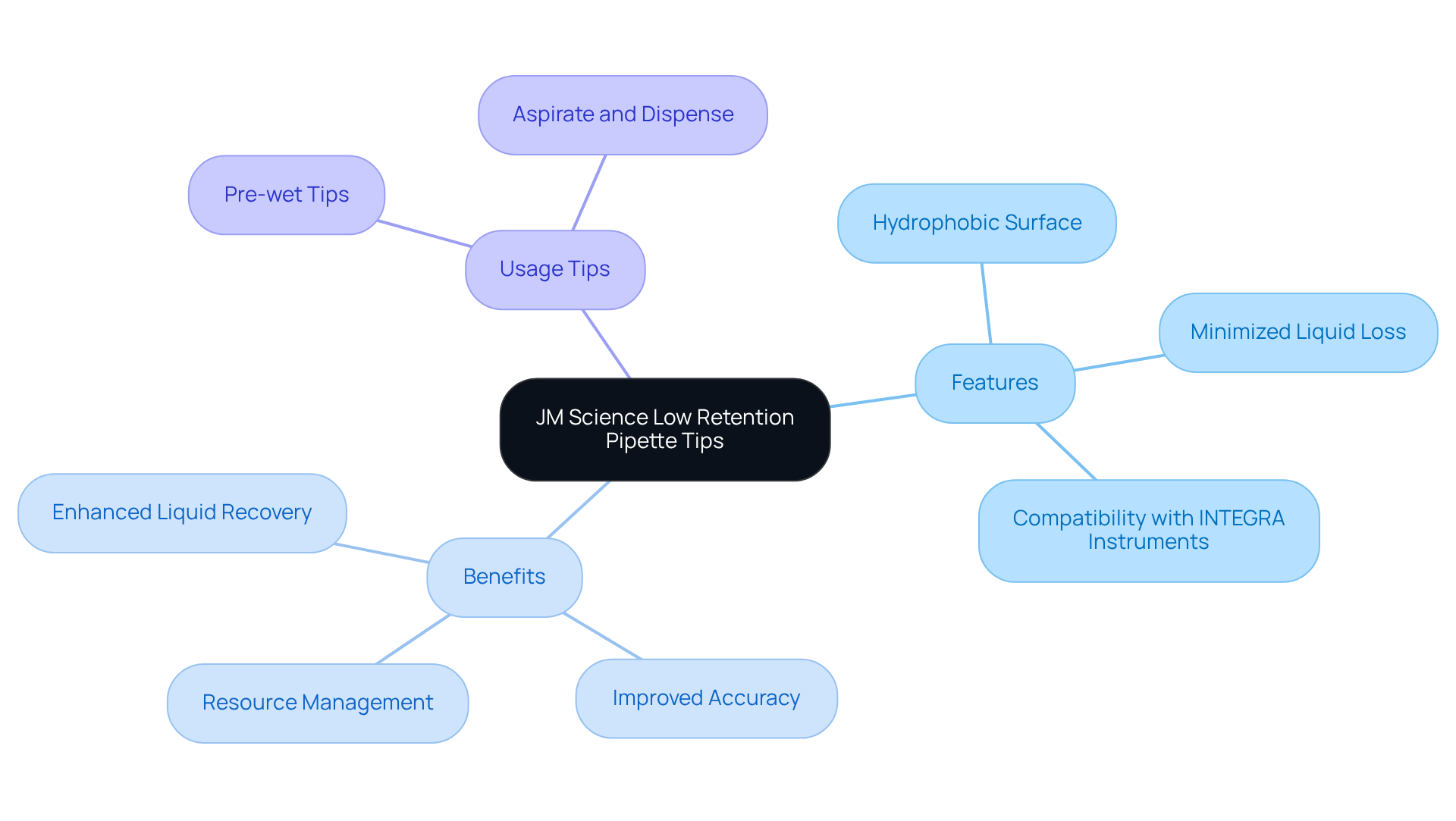
Maximized Sample Integrity: Reduced Residual Volume with Low Retention Tips
Low retention pipette tips are specifically designed to minimize the residual volume left in the device after dispensing, which is a critical factor in maintaining sample integrity. This reduction is particularly vital in assays, where even the smallest quantities can significantly impact results. By facilitating the transfer of a larger portion of the sample, these tools mitigate the risks of contamination and degradation that may arise from residual samples in the pipette. As emphasized, low retention pipette tips are specially designed to minimize sample loss, highlighting their importance in laboratory environments.
In PCR applications, where accuracy is paramount, the utilization of low holding devices can lead to more reliable amplification outcomes. By ensuring that the same quantity of template DNA is employed in each reaction, these tools enhance reproducibility and dependability in experimental results. This reliability is especially crucial in molecular biology, where is essential for successful assays. Furthermore, using low retention pipette tips ensures nearly 100% sample transfer, which is critical for preserving the integrity of samples in sensitive assays.
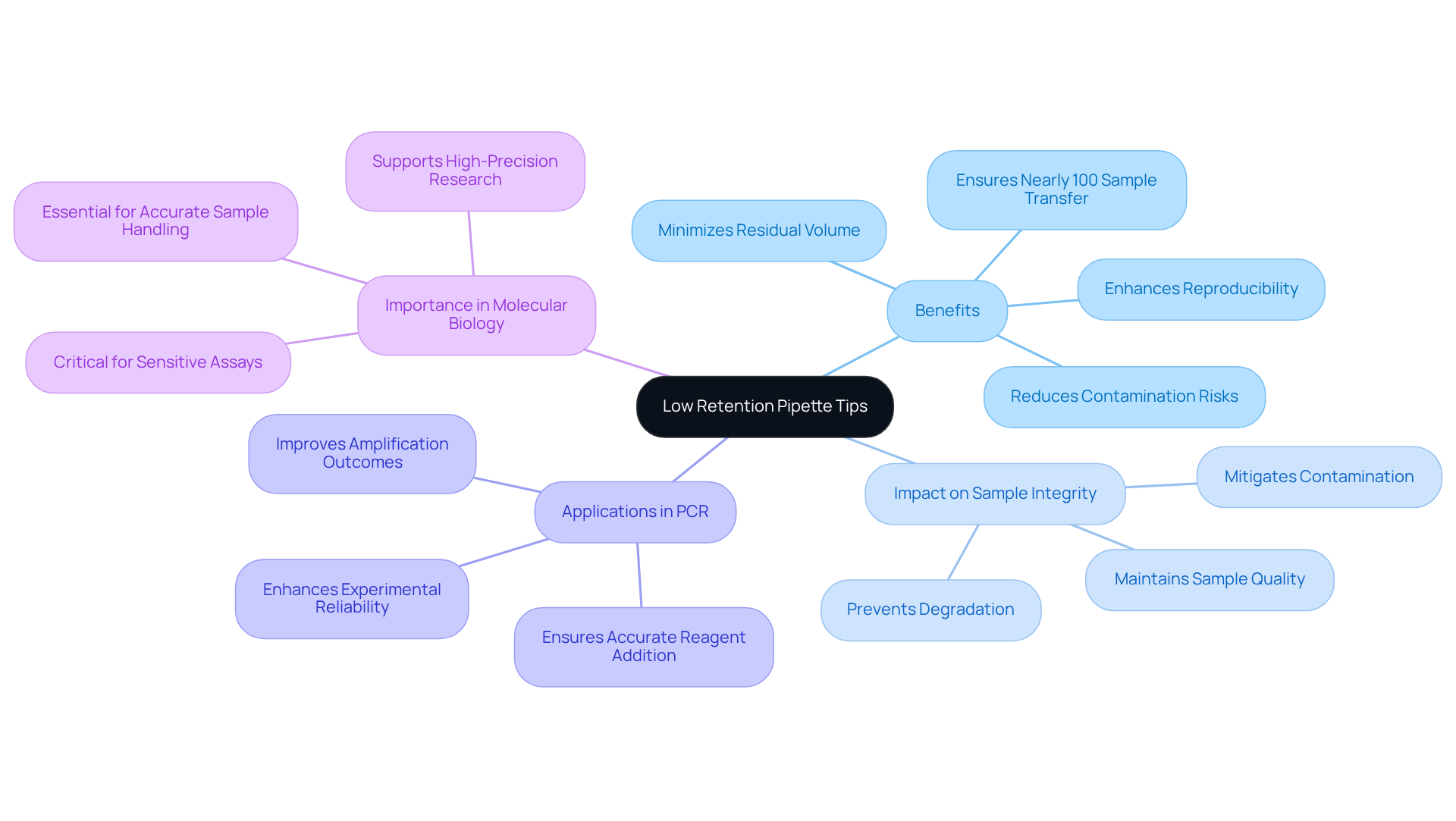
Universal Compatibility: Low Retention Tips for All Pipette Brands
A significant advantage of JM Science's low volume pipette accessories is their universal compatibility with a wide array of pipette brands, including Eppendorf, Gilson, and Thermo Fisher. This feature mitigates concerns about compatibility issues when transitioning to low retention devices, enabling facilities to sustain operational efficiency without interruption. The seamless integration of these tips into existing workflows empowers laboratories to optimize their liquid handling processes effectively.
This versatility proves particularly beneficial for laboratories that employ various brands of liquid handling devices, as it . By reducing the need for specialized supplies tailored to specific models, labs can streamline their operations and lower costs associated with managing a diverse inventory. Consequently, lab managers can concentrate on enhancing productivity and ensuring accurate liquid transfers across multiple applications.
Moreover, the laboratory instrument market is projected to reach $3.44 billion by 2029, growing at a compound annual growth rate (CAGR) of 8.7%. This trend underscores the increasing importance of reliable and efficient pipetting solutions in research environments. Lab supervisors have noted that employing universal dispensing points not only simplifies their inventory control but also enhances their ability to adapt to evolving lab requirements. One lab manager remarked, "The capability to utilize low holding accessories across various brands of pipetting equipment has significantly reduced our supply expenses and improved our workflow efficiency."
Additionally, numerous facilities have successfully integrated low volume dispensing tools into their diverse processes, demonstrating their effectiveness across various applications. This practical implementation further emphasizes the relevance of these solutions in modern research settings.
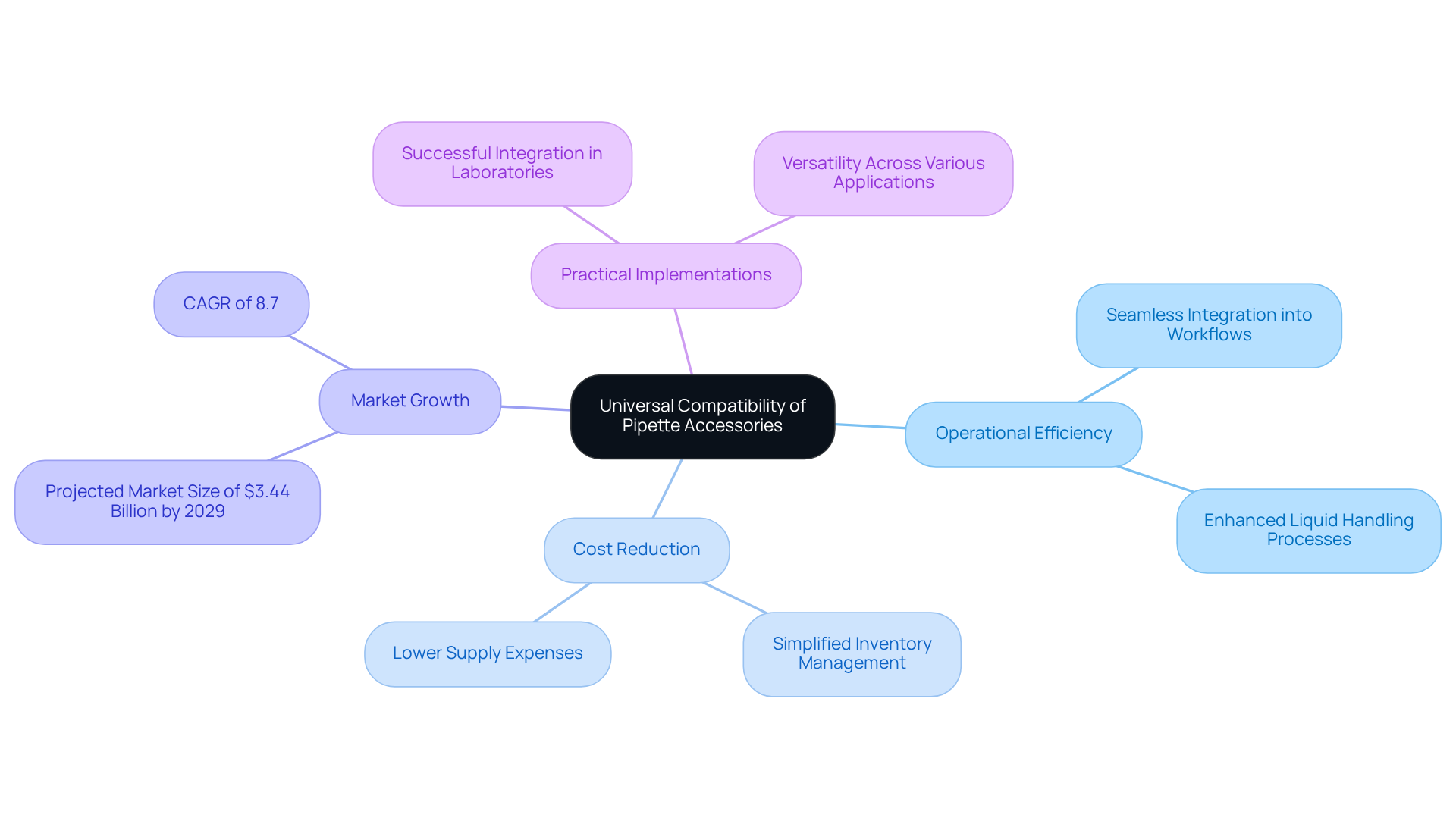
High-Quality Manufacturing: Ensuring Consistency in Low Retention Tips
The low retention pipette tips from JM Science are crafted from high-quality polypropylene, ensuring durability and reliable performance. Their manufacturing process adheres to rigorous quality control protocols, including statistical methodologies like Six Sigma, designed to minimize defects and ensure that every batch meets the highest industry standards. This meticulous attention to detail is essential for facilities that depend on and reproducible outcomes.
Consistent manufacturing practices eliminate variations in tip performance, which can otherwise lead to discrepancies in experimental results. Correct installation and use of liquid handling tools are critical for precise experimental processes; improper connections can create air gaps and yield inaccurate measurements. By utilizing premium labware, facilities can trust the precision and dependability of their liquid handling outcomes.
Quality assurance specialists emphasize that the integrity of materials, such as polypropylene, directly influences the performance of laboratory instruments. As W. Edwards Deming aptly noted, "Uncontrolled variation is the enemy of quality," highlighting the importance of selecting high-quality materials for experimental applications. Additionally, laboratories often face challenges in acquiring reliable instruments, which makes the choice of low retention pipette tips even more vital.
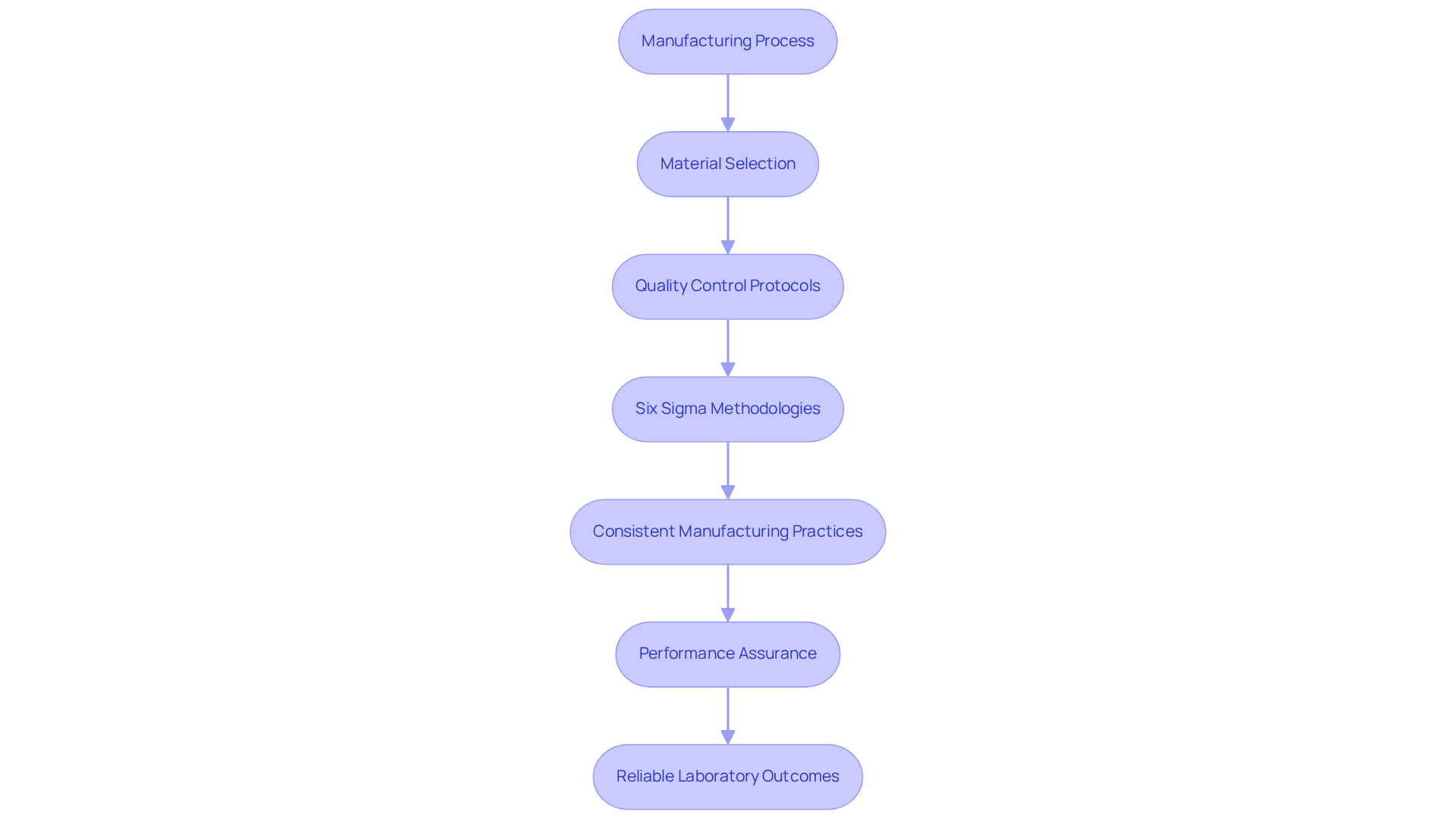
Ideal for Challenging Liquids: Specialized Use Cases for Low Retention Tips
Low volume pipette accessories excel in managing challenging liquids, including viscous solutions, foaming substances, and those with low surface tension. These specialized tools are meticulously designed to minimize sample adherence, making them ideal for handling proteins, enzymes, and nucleic acids that typically cling to standard instruments.
In molecular biology laboratories, where precision is paramount, low-volume pipette accessories are indispensable in processing DNA and RNA samples. Their design significantly mitigates sample loss and degradation, ensuring that researchers can maximize the material available for analysis. This is particularly critical in experiments requiring high accuracy, as even minor losses can significantly affect results. Research indicates that employing low retention pipette tips can enhance the reliability of outcomes in sensitive applications, such as genetic testing and diagnostics, where every drop is crucial.
Moreover, these accessories are particularly effective with thick liquids, facilitating smooth and thorough transfers while eliminating the risk of carryover contamination. This capability not only boosts the efficiency of research workflows but also upholds the integrity of experimental results. The market for laboratory transfer devices was projected to exceed USD 680.40 million in 2022, with forecasts anticipating growth beyond USD 1.47 billion by 2032. This trend underscores the in laboratory settings. The implementation of advanced polymer technology in these components leads to a substantial reduction in sample loss due to adhesion, further underscoring their significance in high-stakes applications.
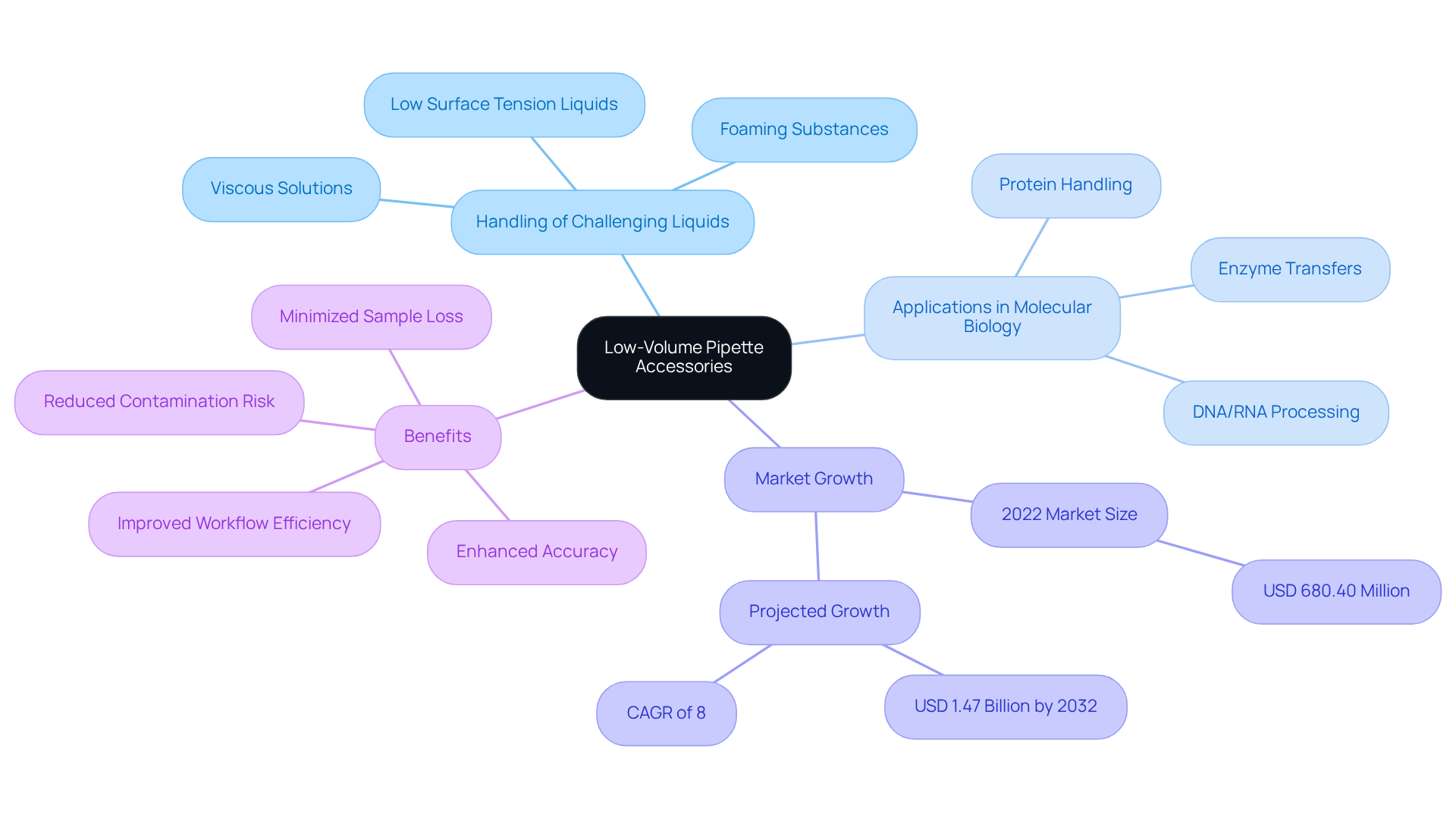
Eco-Friendly Solutions: Sustainable Practices with Low Retention Tips
JM Science underscores its commitment to sustainability through the use of low waste pipette components crafted from eco-friendly materials. This approach not only aims to reduce environmental impact but also ensures high performance. The design of these components is intended to minimize sample waste, allowing for more efficient utilization of reagents—an essential aspect of sustainable research practices.
For example, adopting low retention pipette tips can significantly reduce the plastic waste generated in research facilities by maximizing the utility of each tip. This initiative aligns with the growing trend among research facilities to diminish their carbon footprint and embrace more sustainable methodologies. Environmental scientists emphasize that transitioning to eco-friendly lab supplies is critical for mitigating the ecological crisis, highlighting the importance of sustainable practices in pipetting. As Sir David Attenborough eloquently states, addressing industrial pollution and plastic waste is crucial for the health of our oceans. By integrating these solutions, facilities not only enhance operational efficiency but also contribute positively to environmental stewardship.
To initiate the adoption of environmentally friendly methods, research facilities can transition to low waste disposable tools. This shift not only reduces refuse but also for scientific inquiry.
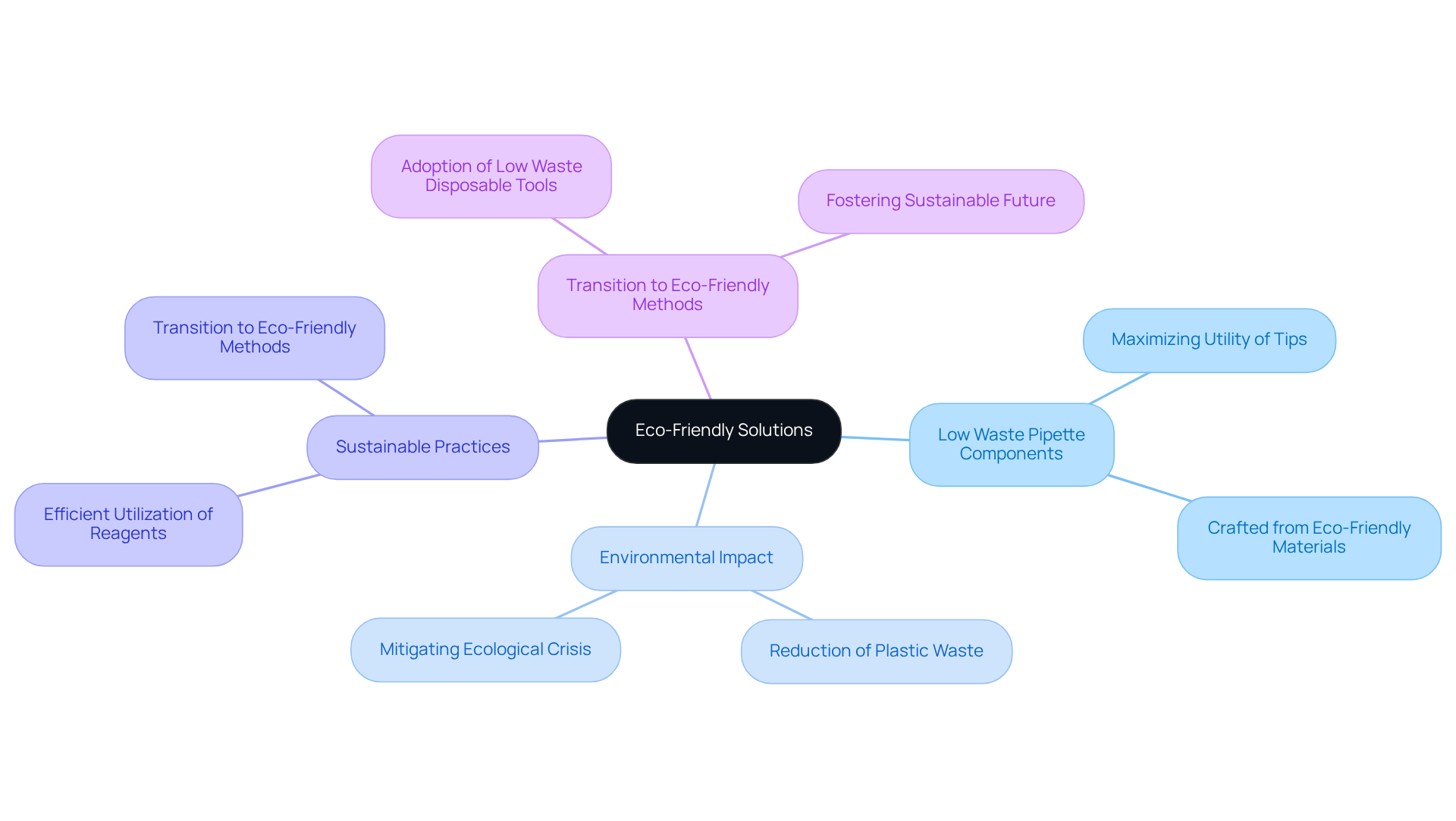
Cost-Effective Performance: Value of Low Retention Pipette Tips
Investing in low retention pipette tips can lead to significant cost reductions for research facilities by minimizing sample waste and enhancing liquid recovery. This efficiency is particularly vital in research environments, especially in pharmaceutical research, where reagent costs can be substantial.
The pipette accessory market is projected to grow from $2.28 billion in 2024 to $2.46 billion in 2025, reflecting a compound annual growth rate (CAGR) of 7.8%, and is expected to reach $3.44 billion by 2029. This growth is driven by an increasing demand for cost-effective scientific solutions.
By mitigating material loss during pipetting, the use of low retention pipette tips empowers facilities to optimize their usage of valuable reagents, ultimately reducing overall experimental costs. This economical performance positions as a key choice for budget-conscious facilities aiming to enhance their operational efficiency.
As highlighted by The Business Research Company, 'the market for these tools has expanded significantly in recent years,' underscoring their importance in modern scientific practices.
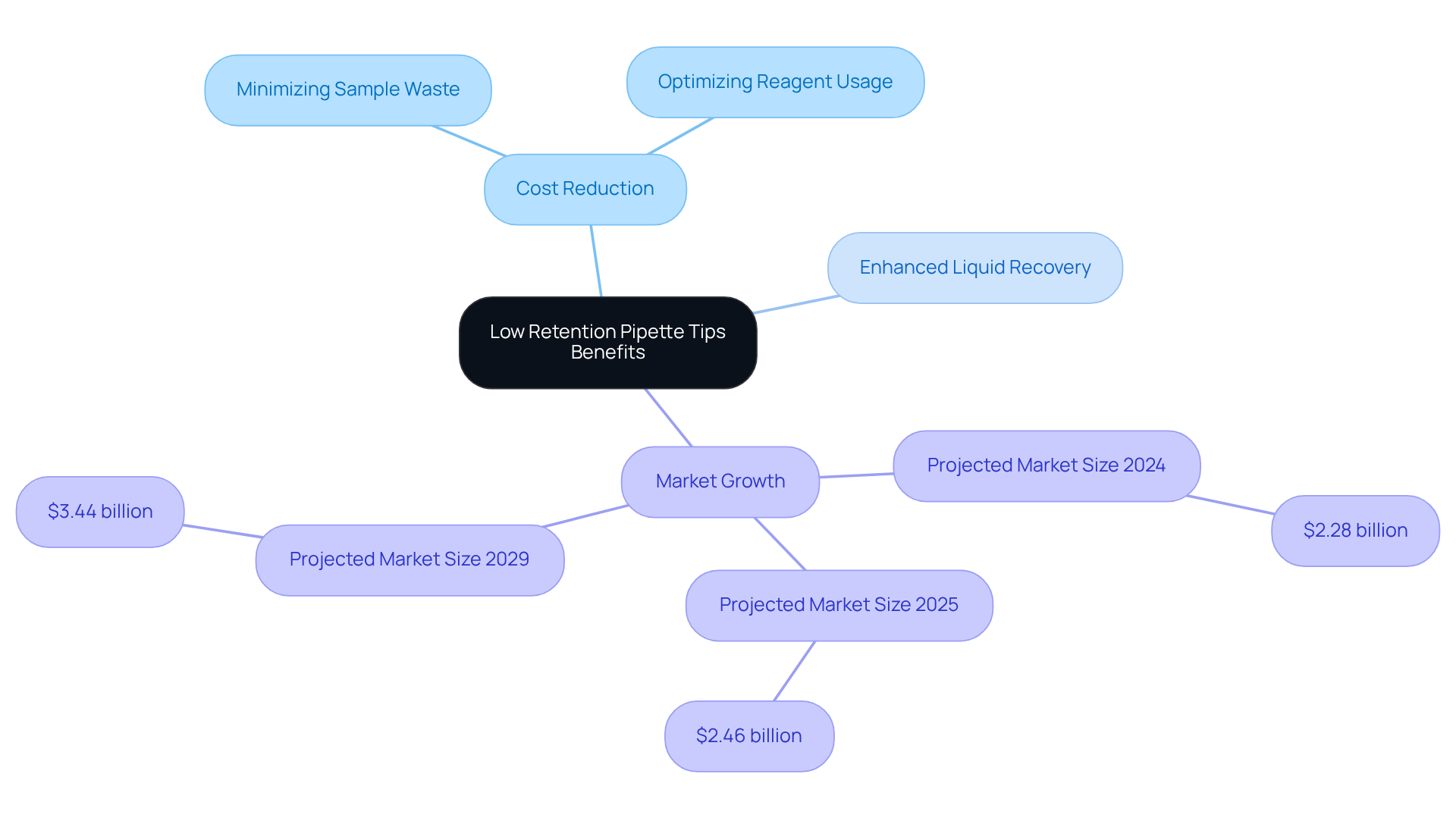
Precision in Measurement: The Role of Low Retention Tips in Accuracy
Low volume disposable pipetting accessories are essential for achieving high measurement accuracy in laboratory environments. Their specialized hydrophobic surfaces significantly minimize liquid adhesion, ensuring that the intended volume is dispensed accurately, without any loss. This feature is particularly critical in clinical diagnostics, where can directly influence patient outcomes.
Research indicates that the use of low retention pipette tips can enhance precision in quantitative assays by minimizing sample loss, which is vital for obtaining reliable test results. As noted by a clinical diagnostics expert, 'Low-viscosity laboratory droppers are not only suitable for routine experiments but also excel in scenarios demanding extremely high experimental accuracy.'
Furthermore, the intrinsic quality and proper use of sample transfer devices are fundamental for meeting elevated standards in research and diagnostics. Additionally, low retention pipette tips are beneficial for handling volatile liquids and assays prone to evaporation, making them versatile tools across various laboratory applications.
Laboratory supervisors should evaluate their current dispensing tools for compatibility with low retention pipette tips to enhance measurement precision and uphold the integrity of diagnostic procedures.
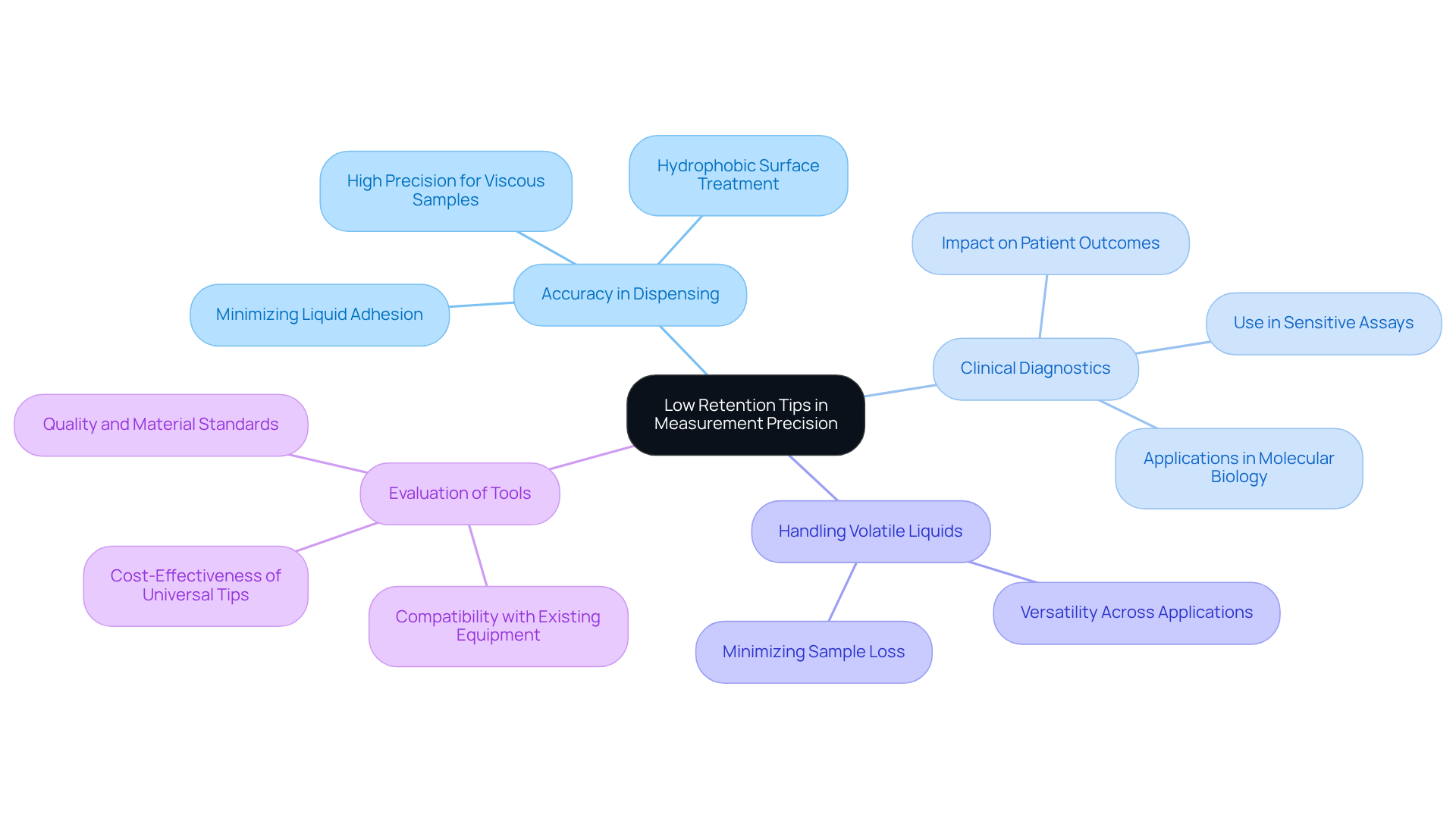
User-Friendly Design: Enhancing Laboratory Workflow with Low Retention Tips
JM Science's low volume dispensing tools are meticulously designed with user-friendliness at the forefront. Their lightweight build and ergonomic form significantly reduce hand fatigue during prolonged liquid transfer tasks. This thoughtful design not only but also promotes efficiency, enabling researchers to maintain focus on their experiments without the distraction of discomfort.
The attachments ensure a secure fit on liquid handling devices, effectively minimizing the risk of air gaps that can compromise precision in fluid dispensing. By optimizing the pipetting procedure, the use of low retention pipette tips facilitates a more efficient workflow, allowing scientists to achieve consistent outcomes with greater convenience. Therefore, the integration of such user-friendly dispensing instruments is essential for streamlining work processes and enhancing overall efficiency.
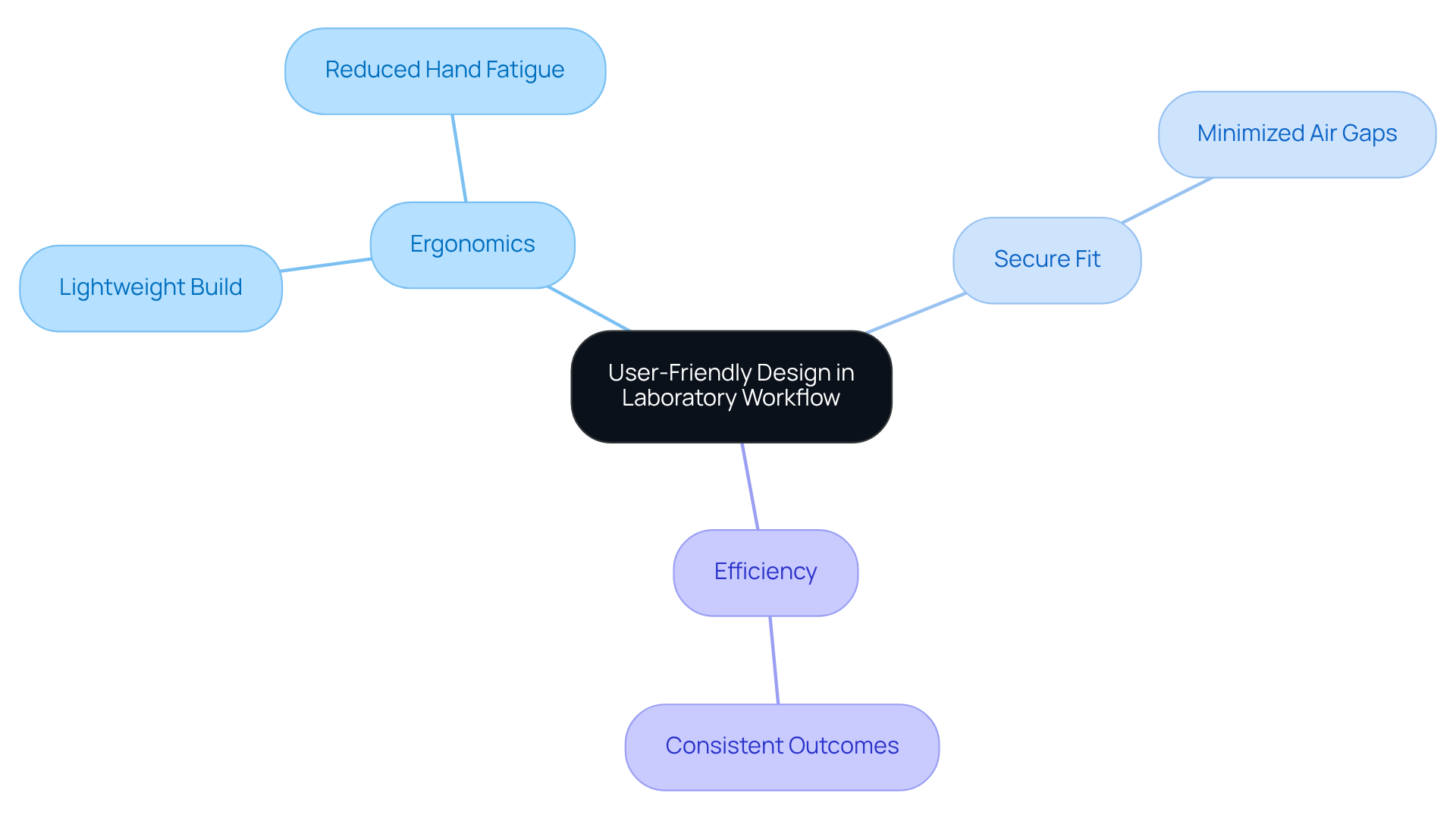
Comprehensive Benefits: Why Low Retention Pipette Tips Are Essential for Laboratories
In summary, low retention pipette tips are indispensable instruments in contemporary research facilities, offering a range of advantages that are crucial for scientific progress. These accessories enhance liquid recovery, optimize sample integrity, and ensure universal compatibility, all while promoting sustainable production practices. Such features are meticulously designed to meet the diverse requirements of scientific research.
Their cost-efficient performance, precision in measurement, and user-friendly design solidify their status as essential components of scientific workflows. By integrating low retention pipette tips, research facilities can significantly enhance operational efficiency, reduce waste, and achieve more reliable results in their experiments. Furthermore, the eco-friendly manufacturing processes associated with these tools foster sustainable laboratory practices, resonating with the increasing focus on environmental responsibility within the scientific community.
Thus, not only elevates the quality of research but also aligns with the broader commitment to sustainability in laboratory environments.
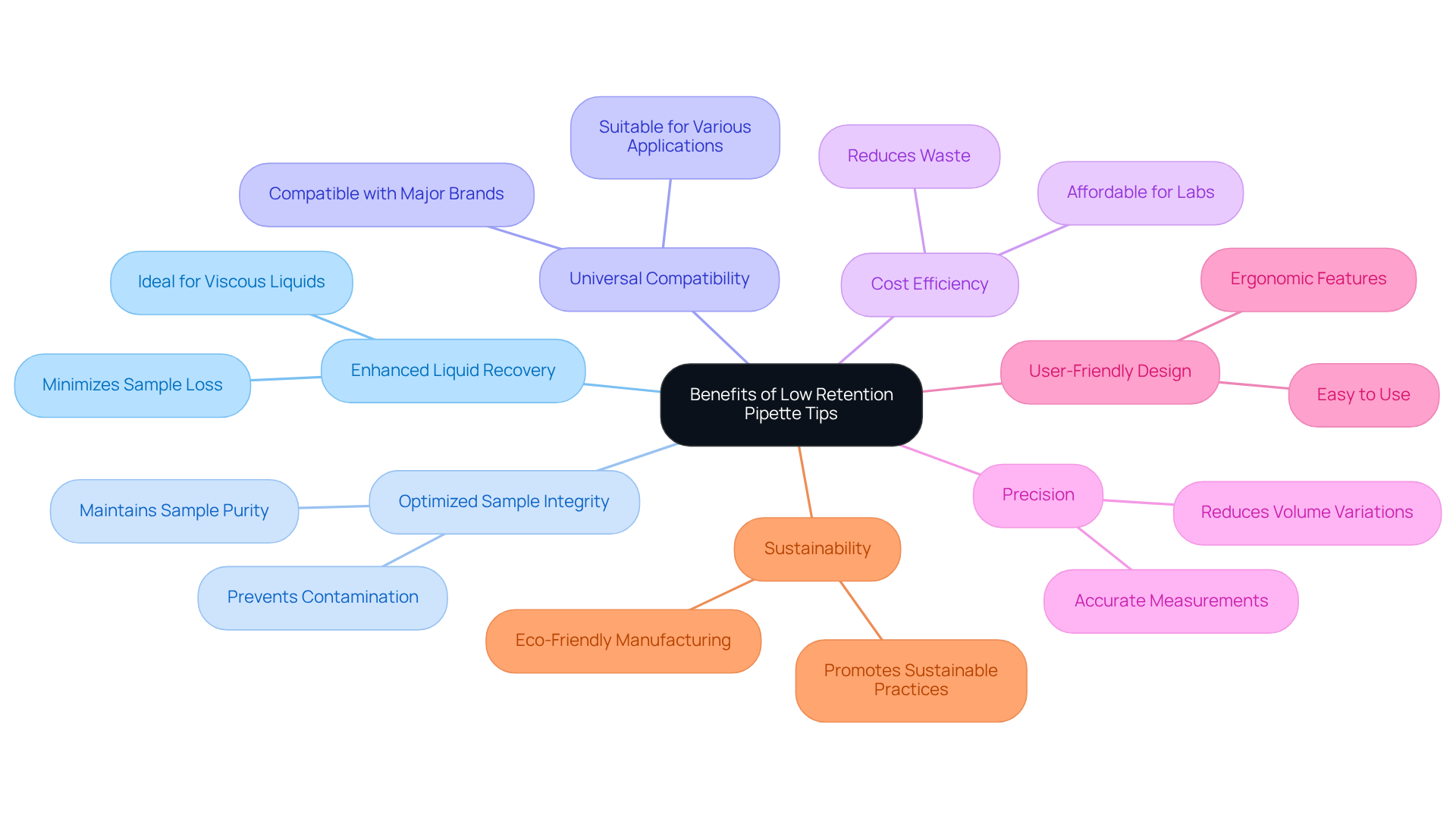
Conclusion
Low retention pipette tips are indispensable tools that significantly enhance laboratory efficiency and accuracy. By minimizing liquid loss and ensuring nearly complete sample recovery, these tips effectively address critical challenges faced in scientific research. Their innovative design not only maximizes liquid transfer but also preserves the integrity of samples, making them invaluable in high-stakes environments where precision is paramount.
The article highlights various benefits of low retention pipette tips, including:
- Compatibility with multiple pipette brands
- Adherence to high-quality manufacturing standards
- User-friendly design
Collectively, these features enable laboratories to streamline workflows, reduce waste, and ultimately lower costs associated with reagent usage. Furthermore, the emphasis on eco-friendly practices underscores the importance of adopting these tools, aligning scientific endeavors with sustainable methodologies.
In summary, integrating low retention pipette tips into laboratory practices not only enhances operational efficiency but also contributes to more reliable and accurate experimental outcomes. As the demand for innovative and sustainable solutions continues to escalate, laboratories must prioritize the adoption of these advanced pipetting accessories to ensure they remain at the forefront of scientific research and environmental responsibility.




